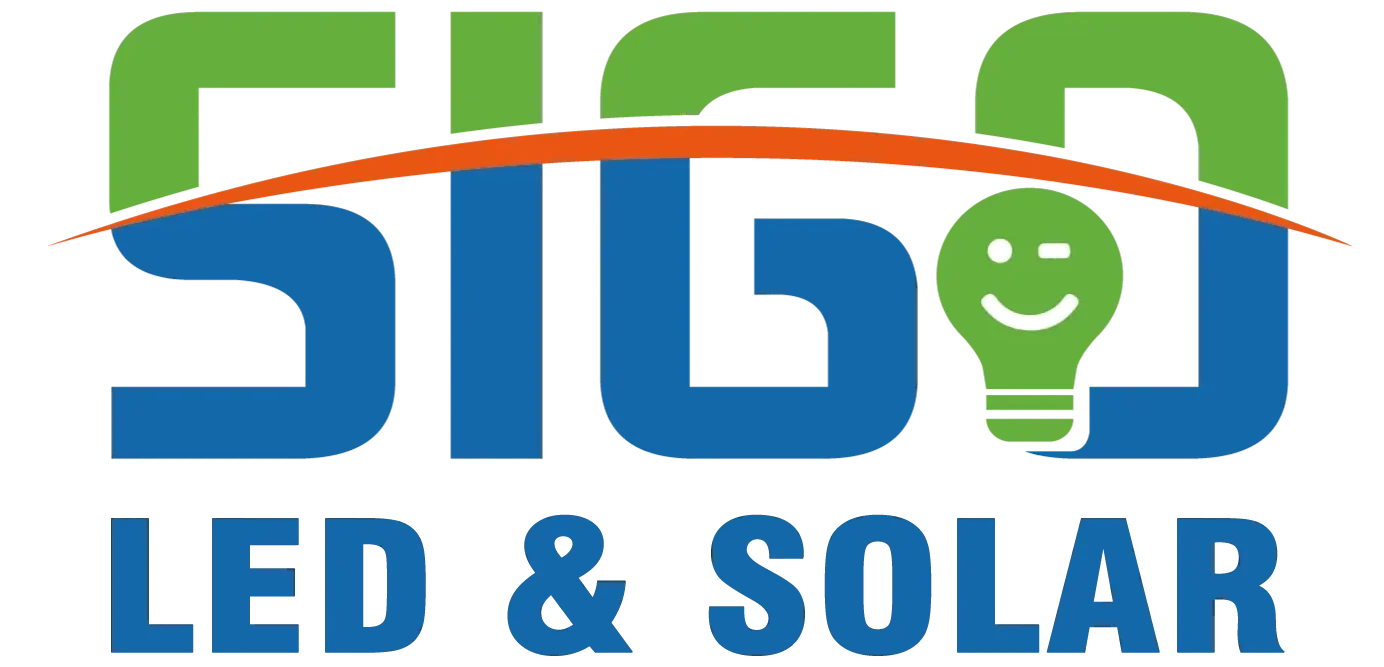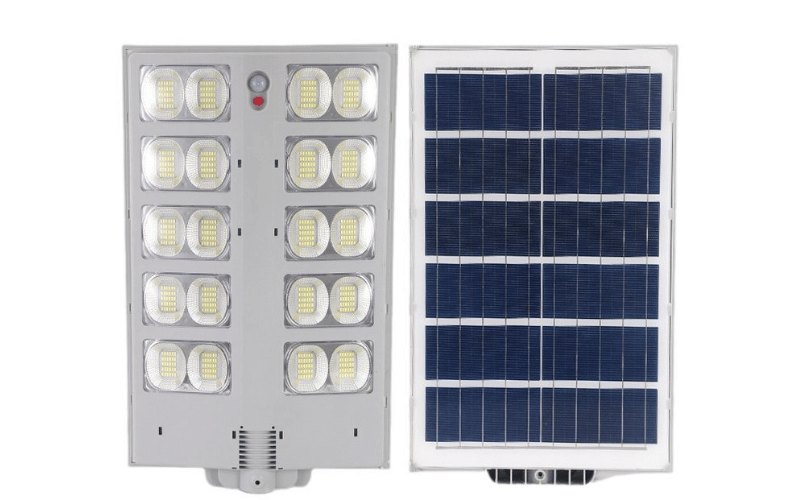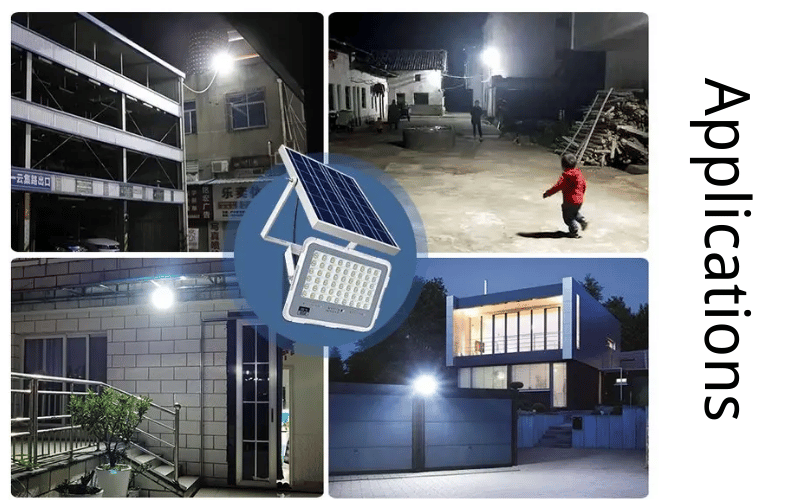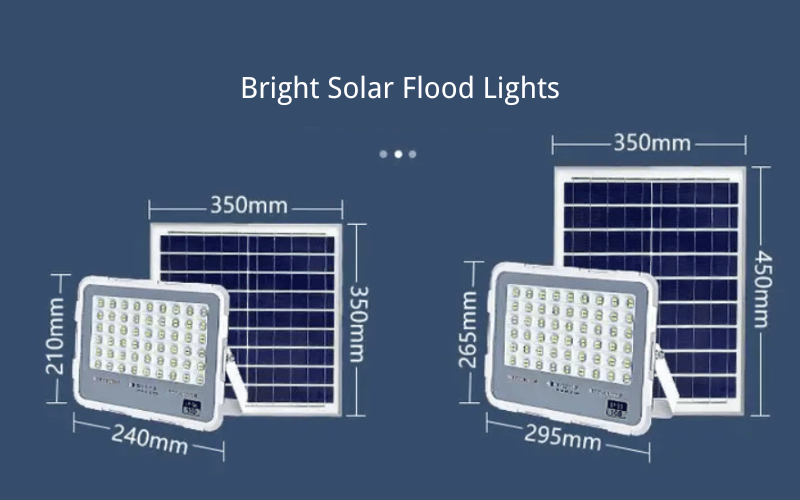Finding the brightest solar flood light for your outdoor spaces can feel overwhelming with so many options available. This guide breaks down everything you need to know, from understanding lumens and brightness factors to identifying key features like advanced LED chips, large solar panels, and robust batteries. Whether you’re lighting up a driveway, enhancing security, or illuminating a backyard, this comprehensive resource provides actionable advice, expert recommendations, and real-world examples to help you make the best choice for your needs.
Table of Contents
ToggleWhat is the Brightest Solar Flood Light?
The brightest solar flood lights are those with a lumen output exceeding 5000 lumens, designed to deliver intense illumination for large-scale applications. These lights are ideal for expansive outdoor areas such as parking lots, sports fields, or large backyards, where high visibility and safety are critical. Their advanced technology ensures powerful, energy-efficient lighting that operates reliably throughout the night.
Key Features of the Brightest Solar Flood Lights
-
Lumen Output: 5000+ lumens for maximum brightness
Lights with 5000 lumens or more can illuminate areas as large as 1000-2000 square feet, ensuring no dark spots remain. For example, a 5000-lumen light can fully cover a two-car driveway or a medium-sized backyard, while lights exceeding 7000 lumens are suitable for even larger spaces like parking lots or sports fields. -
Advanced LED Chips: Efficient and powerful illumination
High-power LED chips, such as those from industry leaders like Epistar and Cree, are the backbone of the brightest solar flood lights. These chips maximize energy conversion, turning stored solar power into intense visible light while minimizing energy waste. This ensures consistent brightness without quickly depleting the battery. -
Large Solar Panels: Capture more sunlight for longer runtime
A wide solar panel, at least 10 inches or more, is essential for capturing sufficient sunlight, especially in areas with shorter daylight hours or frequent overcast weather. Larger panels generate more electricity, ensuring the battery charges fully and the light operates reliably throughout the night. -
Robust Battery Capacity: Long-lasting performance
A high-capacity lithium-ion battery, with a rating of 10,000 mAh or higher, is critical for powering the brightest solar flood lights. These batteries store enough energy to keep the light running for 10-12 hours, even at maximum brightness. For example, a 12,000 mAh battery paired with a 5000-lumen light can provide consistent illumination from dusk to dawn. -
Adjustable Features: Tailored lighting for specific needs
The ability to adjust beam angles, brightness levels, and motion sensor sensitivity allows for customized lighting. For instance, you can narrow the beam to focus on a specific area, such as a garden path, or widen it to cover a large backyard. Brightness controls also let you switch between full power for security and dimmer settings for ambiance.
Examples of Bright Applications
-
Security Lighting:
A 5000-lumen solar flood light with motion sensors is perfect for deterring intruders and illuminating entryways, driveways, or garages. The motion sensor ensures the light activates only when needed, conserving energy while providing an added layer of security. -
Commercial Use:
For large-scale applications like parking lots, sports fields, or construction sites, lights exceeding 7000 lumens deliver consistent and powerful illumination. These lights ensure high visibility, improving safety and functionality in expansive areas. -
Residential Use:
Homeowners can use 5000-lumen lights to brighten large backyards, patios, or gardens. These lights are also ideal for hosting outdoor events, ensuring well-lit spaces for guests and activities.
By focusing on these features and applications, you can confidently select the brightest solar flood lights to meet your specific needs, ensuring reliable, energy-efficient, and long-lasting illumination for any outdoor space.
Understanding Brightness: Lumens and Beyond
Brightness plays a vital role in determining how well solar flood lights illuminate your outdoor spaces. Factors like lumens, beam angle, color temperature, and light distribution all contribute to how bright a light appears and how effectively it meets your needs.
What are Lumens?
- Lumens measure light output:
Lumens quantify the total visible light emitted by a source, focusing solely on brightness rather than energy consumption. A higher lumen count directly translates to a brighter light, making lumens the most reliable metric for comparing brightness levels. - Most home flood lights range from 700 to 3000 lumens:
For residential use, lights in this range are ideal. A 700-lumen light is perfect for pathways or small patios, while a 3000-lumen light provides sufficient brightness for larger backyards or driveways. This range balances brightness with energy efficiency for everyday needs. - Brightest solar flood lights can exceed 5000 lumens:
High-performance solar flood lights designed for commercial or large-scale applications can exceed 5000 lumens. These lights are ideal for illuminating expansive areas like parking lots, sports fields, or large gardens, where intense brightness is essential for visibility and safety.
Factors Affecting Perceived Brightness
- Beam angle: A narrower beam seems brighter in one spot:
The beam angle determines how light is distributed. A narrow beam, such as 30°, concentrates light in a smaller area, making it appear brighter in that specific spot. In contrast, a wider beam, like 120°, spreads light over a larger area, reducing the perceived brightness but providing broader coverage. For example, a narrow beam is ideal for spotlighting a specific area, while a wide beam works better for general illumination. - Color temperature: Cooler white light appears brighter:
Color temperature, measured in Kelvin (K), affects how the light looks. Cooler white light (5000K-6500K) appears brighter and is well-suited for security or task lighting. Warmer light (2700K-3000K) creates a softer, more inviting ambiance but may seem less bright. For instance, use cooler light for driveways and warmer light for patios or gardens. - Light distribution: Even lighting is more useful:
Evenly distributed light ensures consistent illumination across the area, reducing shadows and dark spots. This is particularly important for security and safety, as uneven lighting can leave areas poorly lit and less effective. For example, a well-distributed light is ideal for illuminating large backyards or parking areas where visibility is critical.
By understanding lumens and the factors that influence perceived brightness, you can confidently choose solar flood lights that deliver the right level of illumination for your outdoor spaces.
Top Features of Bright Solar Flood Lights
Choosing the right solar flood lights means focusing on features that ensure optimal brightness, durability, and efficiency. Advanced LED chips, large solar panels, and high-capacity batteries are the key components that deliver reliable and long-lasting performance.
High-Power LED Chips
- Look for lights with advanced LED technology:
High-power LED chips are essential for producing bright and efficient illumination. These chips generate intense light while using minimal energy, making them a cornerstone of high-performance solar flood lights. - These chips convert more energy into light:
Advanced LED chips are designed to maximize energy conversion, turning stored solar power into visible light with minimal waste. This ensures brighter output without quickly depleting the battery, making them ideal for long-term use. - Examples: Epistar, Cree LEDs are known for quality:
Trusted brands like Epistar and Cree lead the industry in LED technology. Their chips are recognized for their superior brightness, energy efficiency, and durability, making them a reliable choice for solar flood lights that need to perform consistently.
Large Solar Panel Surface Area
- A bigger panel captures more sunlight:
The size of the solar panel directly affects how much sunlight it can absorb. Larger panels collect more energy, ensuring the battery charges fully even during shorter winter days or overcast weather. - This charges the battery faster and fuller:
A larger surface area allows the panel to generate more electricity in less time, reducing the risk of undercharging. This ensures the light operates consistently throughout the night, even in challenging conditions. - Aim for panels at least 10 inches wide:
Solar panels with a width of at least 10 inches provide sufficient surface area for efficient energy collection. For high-lumen lights or areas with limited sunlight, consider panels that are even larger to meet increased energy demands.
Robust Battery Capacity
- Longer run times need larger batteries:
A robust battery is critical for ensuring the light stays on throughout the night. Larger batteries can store more energy, allowing the light to operate for extended periods without dimming or shutting off prematurely. - Look for lithium-ion batteries:
Lithium-ion batteries are the preferred choice for solar flood lights due to their high energy density, faster charging times, and longer lifespans compared to other battery types. They are reliable and efficient, making them ideal for outdoor lighting. - mAh (milliampere-hour) rating shows capacity. 10,000 mAh is a good start:
The mAh rating indicates the battery’s storage capacity. A 10,000 mAh battery is a solid starting point for most solar flood lights, providing enough power to keep the light running brightly and consistently through the night.
By focusing on these essential features, you can select solar flood lights that deliver superior brightness, efficiency, and reliability for your outdoor lighting needs.
Real-World Brightness: Lumen Examples
Understanding how lumens translate into practical applications is essential for selecting the right solar flood lights. Whether you need to illuminate large areas or enhance security, choosing the appropriate brightness level ensures effective and reliable results.
Illuminating Large Areas
- Example: A 5000-lumen light can cover a 1000 sq ft driveway:
A solar flood light with 5000 lumens provides intense illumination, making it perfect for large spaces like driveways, parking lots, or expansive backyards. This level of brightness ensures that every corner is well-lit, improving visibility for both vehicles and pedestrians. For example, a 5000-lumen light can illuminate a two-car driveway, ensuring safe navigation at night. - This is like having multiple standard porch lights:
To put it into perspective, a 5000-lumen solar flood light delivers the equivalent brightness of several traditional porch lights combined. This makes it a cost-effective and energy-efficient solution for lighting up large outdoor areas without the need for multiple fixtures or increased energy costs.
Security and Safety Applications
- Case Study: Homeowners report fewer wildlife issues with bright lights:
Bright solar flood lights, particularly those with 3000-5000 lumens, are highly effective at deterring nocturnal animals like raccoons, deer, and stray cats. Homeowners have observed reduced garden damage and fewer wildlife intrusions when using high-lumen lights to illuminate their yards. For instance, a 3000-lumen light placed near a garden can discourage animals from venturing into the area. - Deters intruders effectively. Motion sensors add extra security:
Bright lights not only discourage wildlife but also serve as a powerful deterrent against intruders. When paired with motion sensors, these lights activate instantly upon detecting movement, startling trespassers and alerting homeowners to activity. For example, a 4000-lumen motion-activated light installed near entry points like doors or garages can provide an added layer of security by illuminating dark areas and signaling potential threats.
By understanding how lumens impact real-world applications, you can confidently choose solar flood lights that provide the right level of brightness for your outdoor spaces, ensuring safety, security, and functionality.
Expert Advice: Choosing Your Brightest Light
Selecting the brightest solar flood light involves balancing brightness, functionality, and durability to meet your specific needs. Experts recommend focusing on key features like lumen output, mounting height, and additional functionalities to ensure optimal performance for security, aesthetics, or general outdoor lighting.
What Professionals Recommend
- “For security, prioritize lumen output and beam reach,” says Security Expert John Doe:
High lumen output is critical for bright illumination, while a wide beam reach ensures the light covers a larger area. This combination is particularly effective for deterring intruders and improving visibility in expansive spaces like driveways, backyards, or parking lots. For example, a 5000-lumen light with a 120° beam angle can illuminate a large backyard, leaving no dark corners for potential threats. - “Consider the mounting height; brighter lights are needed for taller poles,” advises installer Jane Smith:
The height at which you mount the light significantly impacts its effectiveness. Taller installations require higher lumen output to ensure the light reaches the ground with adequate brightness. For instance, a 5000-lumen light is ideal for poles over 10 feet tall, while a 3000-lumen light works well for lower installations like fences or walls.
Key Considerations Before Buying
- Motion Sensor: Does it activate at the right distance?
A reliable motion sensor should detect movement within a range of 10-30 feet, depending on your specific needs. For example, a light with a 20-foot detection range is ideal for driveways, while a shorter range works well for patios or entryways. Look for models with adjustable sensitivity settings to customize the detection range and avoid false activations caused by small animals or passing cars. - Weather Resistance: Look for IP ratings (e.g., IP65 or higher):
Weather resistance is crucial for outdoor lights exposed to rain, dust, or extreme temperatures. An IP65 rating ensures the light is dust-tight and can withstand water jets, making it suitable for most outdoor conditions. For harsher environments, such as coastal areas with heavy rain or snow, consider lights with IP66 or IP67 ratings for enhanced durability and protection. - Adjustable Features: Can you aim the light? Control brightness?
Lights with adjustable heads allow you to direct the beam precisely where it’s needed, whether for security or decorative purposes. For example, you can angle the light to highlight a garden feature or focus it on a specific entry point for added security. Models with brightness controls or multiple lighting modes provide additional flexibility, enabling you to adapt the light to different situations, such as dimmer settings for ambiance or full brightness for security.
By following expert recommendations and evaluating these key factors, you can confidently select a solar flood light that delivers the perfect balance of brightness, functionality, and durability for your outdoor lighting needs.
Actionable Takeaways: Get the Brightest Light Now
Choosing and installing the brightest solar flood light doesn’t have to be overwhelming. By following a structured selection process and applying practical installation tips, you can ensure your lights deliver optimal brightness, efficiency, and reliability for your outdoor spaces.
Step-by-Step Selection Guide
-
Assess your needs: How big is the area? What’s its purpose?
Begin by evaluating the size and purpose of the area you want to illuminate. For example, a small patio or garden path may only require a 1000-lumen light, while a large driveway or backyard might need 3000-5000 lumens. Security lighting often demands higher brightness and features like motion sensors to effectively deter intruders. -
Check lumen ratings: Aim for 3000+ lumens for most tasks:
For general outdoor lighting, 3000 lumens is a reliable starting point. Larger spaces, such as parking lots or sports fields, may require 5000 lumens or more to ensure full coverage. Always match the lumen output to the area’s size and intended use. For instance, a 3000-lumen light is ideal for a medium-sized backyard, while a 5000-lumen light is better suited for expansive areas. -
Compare panel size and battery life: Ensure it lasts all night:
Look for solar panels with a large surface area to maximize sunlight absorption, especially in regions with shorter daylight hours or frequent overcast weather. Pair this with a high-capacity battery, such as a 10,000 mAh lithium-ion battery, to ensure the light operates throughout the night. For example, a larger panel and robust battery combination can provide up to 12 hours of continuous illumination. -
Read reviews: See what other users say about brightness and reliability:
User reviews are invaluable for understanding real-world performance. Look for feedback on key aspects like brightness, battery life, and durability. For example, reviews can reveal whether a light maintains consistent brightness over time or if it struggles to charge in cloudy conditions.
Installation Tips for Maximum Effect
-
Mount lights on south-facing surfaces for best sun exposure:
Position the solar panel on a south-facing surface to capture the maximum amount of sunlight throughout the day. This is especially important in winter months when daylight hours are shorter. For example, mounting the panel on a south-facing roof or wall ensures optimal energy absorption. -
Ensure no trees or buildings block sunlight:
Avoid placing the solar panel in shaded areas, as obstructions like trees, fences, or nearby buildings can significantly reduce charging efficiency. For instance, even partial shading during peak sunlight hours can limit the panel’s ability to fully charge the battery, resulting in shorter runtimes at night. -
Clean solar panels regularly for optimal charging:
Dust, dirt, and debris can accumulate on the solar panel over time, blocking sunlight and reducing charging efficiency. Clean the panel with a damp cloth or soft brush at least once a month, or more frequently in dusty or rainy environments, to maintain peak performance.
By carefully selecting the right solar flood light and following these installation tips, you can achieve bright, reliable, and energy-efficient outdoor lighting for any space.
Frequently Asked Questions
Q: What is the brightest solar flood light?
A: The brightest solar flood lights have a lumen output exceeding 5000 lumens. These lights are ideal for large-scale applications like parking lots, sports fields, or expansive backyards. They provide intense illumination, ensuring high visibility and safety in wide areas.
Q: How many lumens do I need for my outdoor space?
A: The number of lumens you need depends on the size and purpose of your space. For small patios or pathways, 700-1000 lumens work well. Medium-sized backyards or driveways typically require 3000 lumens, while large areas like parking lots or sports fields need 5000 lumens or more for effective illumination.
Q: What features should I look for in a solar flood light?
A: Look for key features like high lumen output (3000+ lumens for most tasks), advanced LED chips for energy efficiency, large solar panels (10 inches or more) for better sunlight absorption, and robust lithium-ion batteries (10,000 mAh or higher) for long-lasting performance. Adjustable beam angles, motion sensors, and weather resistance (IP65 or higher) also enhance functionality.
Q: How do I ensure my solar flood light charges efficiently?
A: Mount the solar panel on a south-facing surface to maximize sunlight exposure. Avoid placing it in shaded areas or near obstructions like trees or buildings. Clean the panel regularly to remove dust and debris, which can block sunlight and reduce charging efficiency.
Q: Are solar flood lights effective for security?
A: Yes, solar flood lights are highly effective for security. Bright lights (3000-5000 lumens) deter intruders by eliminating dark areas. Motion sensors add an extra layer of security by activating the light when movement is detected, startling trespassers and alerting homeowners.
Q: How long do solar flood lights last at night?
A: The runtime of solar flood lights depends on the battery capacity and sunlight exposure. A light with a 10,000 mAh lithium-ion battery can typically last 10-12 hours on a full charge. Ensuring the solar panel receives adequate sunlight during the day helps maintain consistent nighttime performance.
Q: Can I use solar flood lights in bad weather?
A: Yes, most solar flood lights are designed for outdoor use and come with weather-resistant ratings. Look for lights with an IP65 rating or higher to ensure they can withstand rain, dust, and other harsh conditions. For extreme environments, consider IP66 or IP67-rated lights for added durability.
Q: How do I choose the right solar flood light for my needs?
A: Start by assessing the size and purpose of your space. Determine the required brightness (lumens), and look for features like motion sensors, adjustable beam angles, and weather resistance. For larger areas or high-security needs, choose lights with 5000+ lumens, large solar panels, and high-capacity batteries.
Q: Do solar flood lights require maintenance?
A: Solar flood lights require minimal maintenance. Clean the solar panel monthly to remove dust and debris, ensuring optimal sunlight absorption. Check for any damage to the light or panel after severe weather and replace the battery every 2-3 years for consistent performance.
Q: Are solar flood lights cost-effective?
A: Yes, solar flood lights are cost-effective. They use free solar energy, reducing electricity bills, and require minimal maintenance. Their long lifespan and energy efficiency make them a smart investment for outdoor lighting.
Concluding Summary
Choosing the brightest solar flood light involves understanding lumens, evaluating essential features like panel size and battery capacity, and considering real-world applications. By following expert advice and practical installation tips, you can ensure your lights deliver optimal brightness, efficiency, and reliability. Whether for security, aesthetics, or general outdoor lighting, the right solar flood light will transform your space with energy-efficient, long-lasting illumination.





